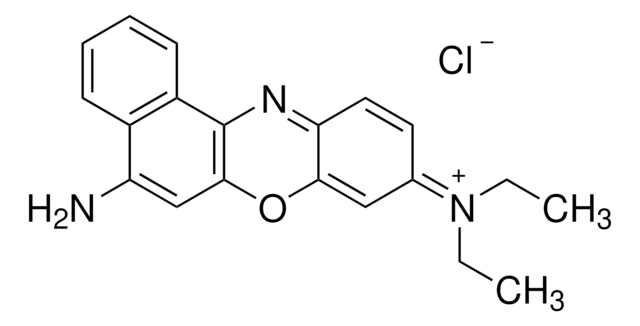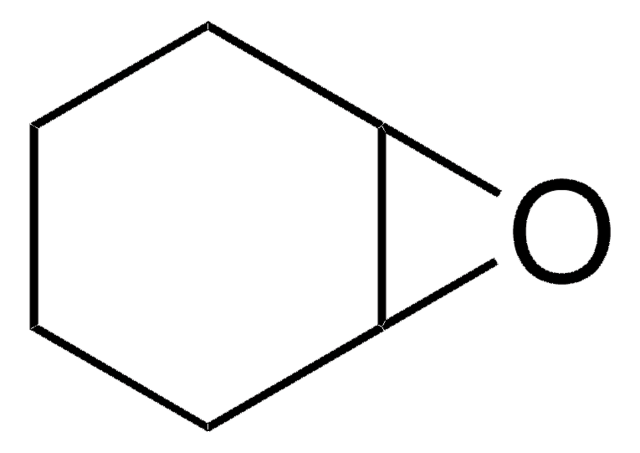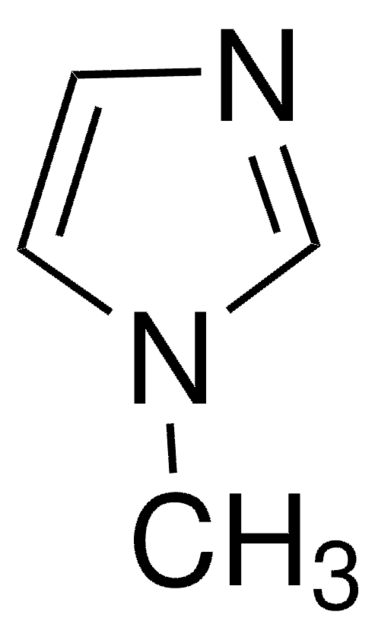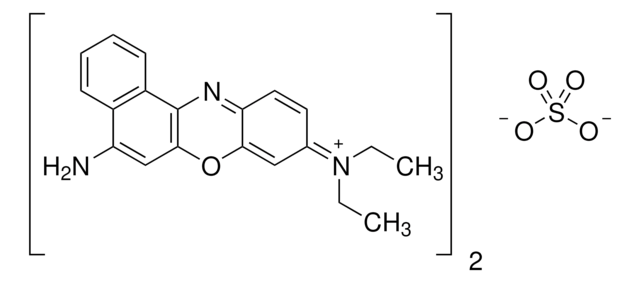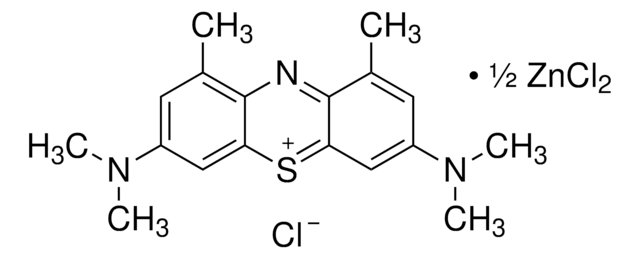Kluczowe dokumenty
255246
Cresyl Violet perchlorate
Synonim(y):
Oxazine 9 perchlorate
About This Item
Polecane produkty
Próba
>96.5% (HPLC)
Poziom jakości
Formularz
powder
λmaks.
602 nm
ε (współczynnik ekstynkcji)
≥27000 at 267-273 nm
≥50000 at 599-605 nm
≥7000 at 316-322 nm
fluorescencja
λem 602 nm in ethanol
Zastosowanie
diagnostic assay manufacturing
hematology
histology
temp. przechowywania
room temp
ciąg SMILES
OCl(=O)(=O)=O.Nc1cc2OC3=CC(=N)C=CC3=Nc2c4ccccc14
InChI
1S/C16H11N3O.ClHO4/c17-9-5-6-13-14(7-9)20-15-8-12(18)10-3-1-2-4-11(10)16(15)19-13;2-1(3,4)5/h1-8,17H,18H2;(H,2,3,4,5)
Klucz InChI
YZUJISGZMSLVAU-UHFFFAOYSA-N
Powiązane kategorie
Opis ogólny
Zastosowanie
Hasło ostrzegawcze
Warning
Zwroty wskazujące rodzaj zagrożenia
Zwroty wskazujące środki ostrożności
Klasyfikacja zagrożeń
Eye Irrit. 2 - Skin Irrit. 2 - STOT SE 3
Organy docelowe
Respiratory system
Kod klasy składowania
11 - Combustible Solids
Klasa zagrożenia wodnego (WGK)
WGK 3
Temperatura zapłonu (°F)
Not applicable
Temperatura zapłonu (°C)
Not applicable
Środki ochrony indywidualnej
dust mask type N95 (US), Eyeshields, Gloves
Wybierz jedną z najnowszych wersji:
Masz już ten produkt?
Dokumenty związane z niedawno zakupionymi produktami zostały zamieszczone w Bibliotece dokumentów.
Klienci oglądali również te produkty
Nasz zespół naukowców ma doświadczenie we wszystkich obszarach badań, w tym w naukach przyrodniczych, materiałoznawstwie, syntezie chemicznej, chromatografii, analityce i wielu innych dziedzinach.
Skontaktuj się z zespołem ds. pomocy technicznej


